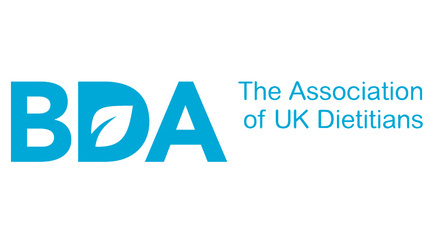Human milk is the first food of human life. Your milk is unique to your baby and their nutritional needs. This fact sheet provides information about human milk, breastfeeding and where to get advice and support.
The World Health Organization recommends exclusive breastfeeding from birth up to six months of age and then continued breastfeeding up to two years and beyond, alongside the introduction of safe and nutritious complementary foods. For more information see our Complementary Feeding (weaning) food fact sheet.

Benefits of breastfeeding
Breastfeeding has many benefits for you and your baby and supports loving relationships. Any amount of human milk is beneficial. It is a free, sustainable resource that meets the nutritional needs of most infants for healthy growth and development, whilst protecting the world we live in.
Human milk is a living substance that adapts and changes to meet the needs of your baby as they grow and develop. It contains anti-infective and anti-bacterial substances produced by your body in response to your environment. These are passed on to your baby in your milk. They help your baby build a strong immune system to protect them from infections and diseases.
Babies fed human milk are less likely to suffer with ear, chest, and gastrointestinal infections. They are also less likely to suffer from constipation, eczema, asthma, allergies, leukaemia, and long-term health conditions such as obesity, type 2 diabetes, and heart disease. Other benefits include protection against sudden infant death syndrome as well as optimum development of baby’s jaw and teeth alignment.
A parent who produces breastmilk has a lower risk of developing breast and ovarian cancer, heart disease, obesity, and weak bones (osteoporosis).
Antenatally (before birth)
Learn about how you make milk and identify who will support you. There are only a few scenarios where breasts are unable to make enough milk to feed a baby. Discussing your feeding intentions early on with your midwife will help identify any barriers that might impact on your production of breastmilk and ability to breastfeed.
If you have a low-risk pregnancy, you can try hand expression in the later weeks of the third trimester. This will help you feel confident breastfeeding and most likely to succeed. Discuss this with your midwife.
Postnatally (after birth)
Holding your baby skin to skin will calm and relax both you and your baby. It will help your baby adapt to being outside the womb, stimulate release of your milk-making hormones and encourage your baby to breastfeed. It allows healthy bacteria to pass from you to your baby’s skin, protecting them from infection. You can use skin to skin contact at any time to calm and sooth your baby and stimulate milk production.
Early support is key to successful breastfeeding. Ask an experienced health professional to watch your baby feeding and tell you if their position and attachment at the breast is correct and they are transferring milk from your breast effectively. Breastfeeding should be comfortable and pain-free. If it isn’t, ask for help straight away.
Offer your breast to your baby whenever they show signs of wanting to feed. These include stirring from sleep, turning the head towards the breast, licking their lips, or sucking their hands. Offering your breast in response to these signs or when you wish to feed your baby is called responsive feeding and will help to maximise your milk supply.
Bottles and dummies can hide these feeding signals. Missed feeds can reduce your milk supply so you should try to avoid this until breastfeeding is established.
Milk production
Colostrum is a thick, concentrated milk produced in small amounts, containing everything your baby needs in the first few days of life. A newborn’s tummy is tiny - about the size of a cherry - increasing to the size of an egg around two to three weeks of age.
This means your baby will want to feed often. Your milk begins to change and increase in volume usually three to five days after birth. You might feel quite emotional when this change happens.
How do I know my baby is getting enough?
If your baby is drinking enough milk, their poos should change from black colour on day 1, to green and then yellow in the first week. Their wees should increase from one on day 1 to six to eight on day 7.
Watching and listening for deep swallows when your baby feeds is another good sign they are getting enough milk. Your baby should be alert and active when feeding and feed at least ten times every 24 hours.
Expressing
In the early days hand expression can help your milk volumes to increase. It can also help to relieve engorgement (very full breasts).
Once your milk volumes have increased, if you need to express, ‘hands on pumping’ has been shown to be most effective in drawing off higher fat milk in larger volumes, over a shorter time.
Parent nutrition
When you are nursing, your body is more efficient at absorbing nutrients to ensure the milk contains everything your baby needs. It is important to eat well when nursing as dehydration and hunger make us tired and irritable.
Vitamins
You should supplement your diet with 10 micrograms of vitamin D per day as well as supplementing your baby.
From birth to one year of age, your baby should be supplemented with 8.5 – 10 micrograms of vitamin D per day unless having more than 500mls of formula milk per day. See our vitamin D food fact sheet.
Important to consider
Some chemicals and substances you consume can pass into your milk.
Alcohol and nicotine pass into human milk. It is okay to have an occasional, small, alcoholic drink. Try to make this after you feed your baby. Never bed share or fall asleep with your baby after drinking alcohol. If you smoke also try to restrict this to after feeds.
If you consume caffeine in large volumes this may cause your baby to be irritable, fussy and sleep poorly. Caffeine can be found in drinks and foods: coffee, tea (including green and herbal teas), cola, energy drinks, flavoured water, cocoa/chocolate, and some pain relief medications. Limit your caffeine intake to less than 200mg/day. Low birthweight and young babies are sensitive to even small amounts.
Summary
- Human milk is intended for human babies and is the ideal food for your baby.
- Any amount of human milk benefits you and your baby’s health and the environment.
- Aim for six months of exclusive human milk feeding and extended breastfeeding up to two years of age alongside appropriate foods.
- Learn about human milk and breastfeeding before your baby is born.
- Breastfeeding should always be comfortable. If not ask for help immediately.
- Learn how to tell if your baby is getting enough milk.
- Supplement your diet with vitamin D when breastfeeding.
- Supplement your baby’s diet with vitamin D unless they are having more than 500mls formula milk per day.
Source(s)
- WHO | Breastfeeding accessed 20 Sept 2021
- Infant Health Research - Baby Friendly Initiative (unicef.org.uk) accessed 20 Sept 2021
- La Leche League 2020 The Benefits of Antenatal Colostrum Harvesting - La Leche League International (llli.org) accessed 20 Sept 2021
- BFI 2021 Skin-to-skin contact - Baby Friendly Initiative (unicef.org.uk) accessed 20 Sept 2021
- Morton, J., Hall, J. Y., Wong, R. J., Thairu, L., Benitz, W. E., & Rhine, W. D. (2009). Combining hand techniques with electric pumping increases milk production in mothers of preterm infants. Journal of Perinatology, 29(11), 757-764.
- Morton, J., Wong, R. J., Hall, J. Y., Pang, W.W., Lai, C.T., Lui, J., Hartmann, P.E., & Rhine, W. D. (2012). Combining hand techniques with electric pumping increases the caloric content of milk in mothers of preterm infants. Journal of Perinatology, Jan 5. doi: 10.1038/jp.2011.195.
- NHS Vitamins and Minerals – Vitamin D, 2020 - Vitamins and minerals - Vitamin D - NHS (www.nhs.uk) accessed Sept 2021
- BFN 2019 - BfN How Safe Is?...Alcohol, Smoking, Medicines and Breastfeeding (breastfeedingnetwork.org.uk) accessed 20 Sept 2021
- NHS Breastfeeding and Diet 2018 - Breastfeeding and diet - NHS (www.nhs.uk) accessed 20 Sept 2021






